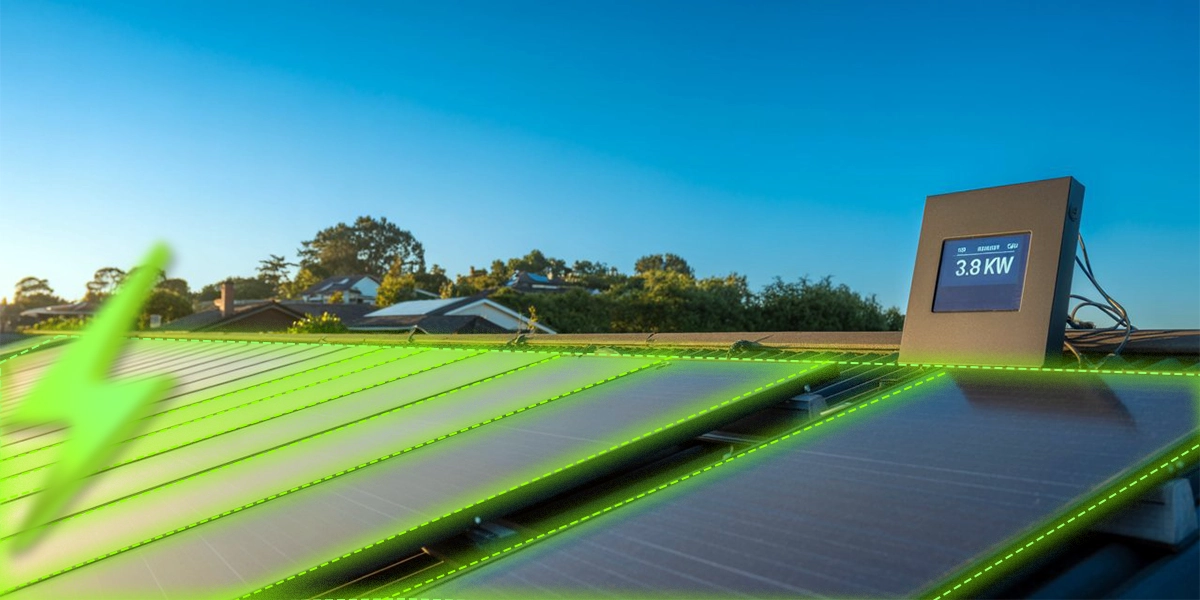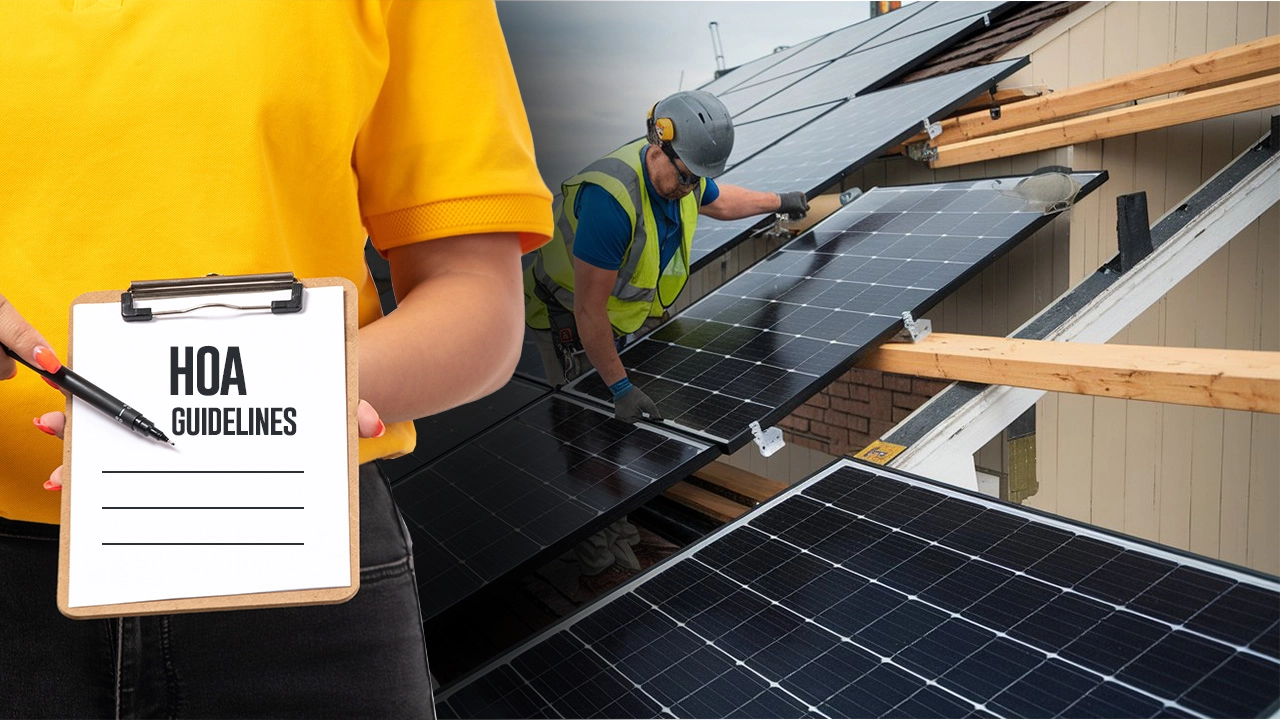- Updated On: Aug 23, 2024
The 7 Best Roofs For Solar Panels Installation
If you are planning to go solar, the first thing you would think about will be your roof. Rooftop installations are very common – compared to ground mount they are always cheaper and optimize the available space on the building’s roof. However, whether your roof is right for solar or not depends on a few things, the most important of which is the type of roofing material that you have. Most solar energy systems have an expected lifespan of 25 to 30+ years, thus you require your roof to be durable enough to hold the system!
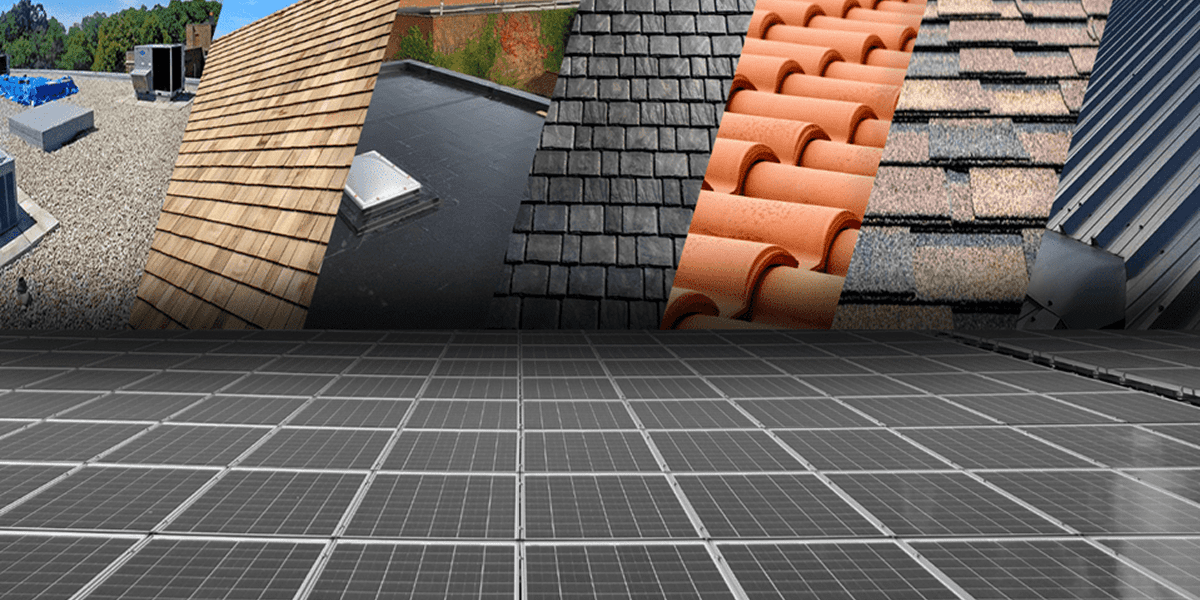
This article will also explain which roof materials are appropriate for solar panels. Different roof types possess different structural features, like material and angles, which affect the amount of sunlight reaching the panels. So, how to choose the best roof for solar panel efficiency? By the end of this discussion, you will know the 7 best roofs for solar panel installation.
What type of roof is best for solar panels?
1. Shingle Rooftops:
Shingle rooftops are a popular and cost-effective roofing option for homeowners. Made from materials like asphalt, wood, or metal, they offer durability, weather resistance, and a variety of styles and colors. Shingle roofs are easy to install and maintain, providing excellent protection against rain, wind, and sun. They’re a versatile choice for enhancing a home’s aesthetic appeal and functionality.
There are two main types of shingle roofs: asphalt shingles and composite shingles. Asphalt shingle roofs are composed of cellulose mat or fiberglass material, while composite shingles have slate, wood, or laminate. In comparison to asphalt shingles, composite shingles are more durable and are best for solar panel installation.
To install solar panels, you will require penetrating mounts. For this, the studs will drill into the roof, and the solar panels will be attached to them. Tar and flashing are added to secure the panels. This helps secure your roof from issues like water leakage and makes the roof more durable.
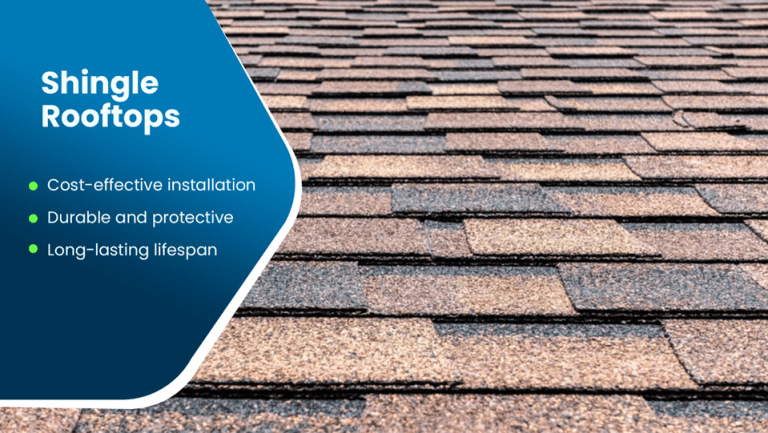
Advantages:
- Installing solar panels on shingle rooftops is cost-effective because you can install panels on your existing roofs rather than get a new one.
- The shingle roofs are durable in nature and have properties like wind protection and heat resistance.
2. Metal Rooftops:
Among the best roofs for solar panels, the metal roof comes in second. These are low-maintenance, sustainable, and durable roofs. Moreover, these roofs have standing seams, which help in installing solar panels with sufficient attachments. Thus, you don’t require additional attachments like a ballast system or mounts. This also reduces the cost of labor for solar panel installation.
Advantages:
- If you live in sunnier states like Colorado, Texas, or Florida, a metal roof is the best roof for solar panels. This is because it will reflect extra sunlight to solar panels and keep your home cool.
- Metal roofs can deliver additional radiation to solar panels, which maximizes sun exposure and radiation absorption, which helps generate more electricity.
- These roofs offer spectacular longevity with splendid durability. It can last for about 60 to 80 plus years. Moreover, they are sustainable in nature as they are manufactured with recycled aluminum.
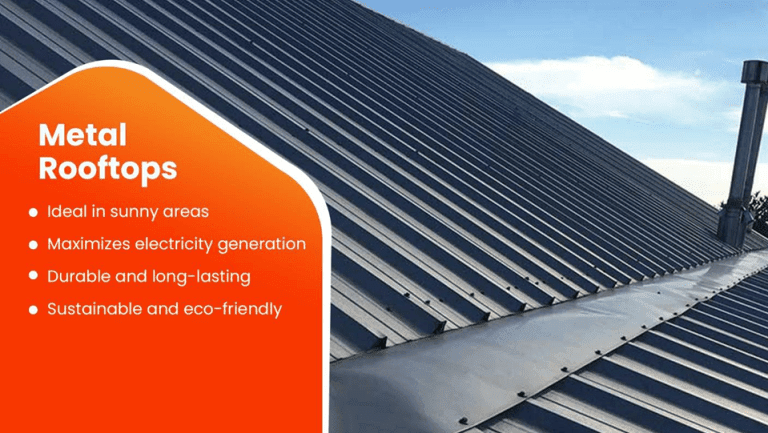
3. Tile Rooftops:
Tile roofs are mostly made with slate, concrete, and clay. Penetrating mounts are needed to install solar panels on these roofs. These mounts will help in lifting solar panels slightly above the roof. Moreover, times have different shapes that can create unevenness, which can further lead to problems in solar panel installation. For easy installation, you will need to cut tiles to create uniformity. Because of this, the installation cost can jack up.
Advantages:
- Tile roofs are mostly composed of clay, which is extremely porous. Because of this, roof tiles’ water absorption properties are high, making them water resistant.
- The rooftops with concrete tiles have longer life cycles and can last up to 50 + years.
- Cold resistance is one of the properties of tile roofs, and in states like Arizona and California, almost ninety percent of homes have these roofs.
Drawbacks:
- Tile roofs are expensive, and installing solar panels on them is challenging, which can also raise the installation cost.
- During solar panel installation, tile roofs can suffer breakage. Thus, to install solar panels on this roof, you need to hire a professional installer.
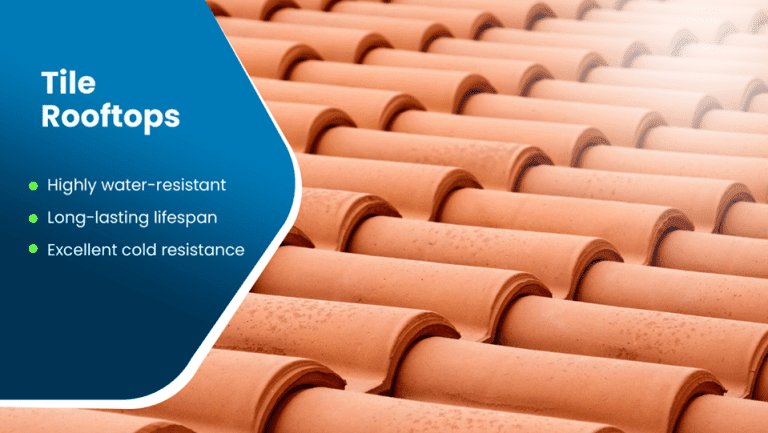
4. Gravel And Tar Rooftops:
Tar and gravel roofs are among the best roofs for solar panels. However, as they are flat, you will need additional brackets to create ideal slopes. Moreover, these roofs have close-fitted seals, which reduce the risk of leakage and can last up to 25 years.
Advantages:
- The gravel and tar rooftops are cost-effective and are best for solar panel installation.
- There are no such risks of leaks and cracks on these rooftops.
Disadvantages:
- As the tar and gravel roofs are flat, you will be required to add additional brackets, as the solar panel needs a specific angle for maximum production.
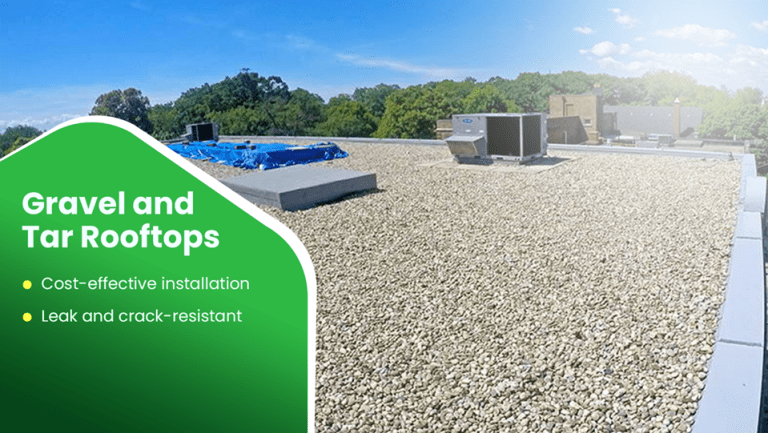
5. Wood Rooftops:
Wood roofs are also a good choice for solar panel installation and also make homes more aesthetically appealing. They have great insulating properties and can help in maintaining temperature stability. Like solar energy, wood is also a renewable resource and can offer several environmental benefits like reducing heat effects.
Advantages:
- Wood rooftops have multiple environmental benefits. You can also reduce carbon footprints in an environment with this because it’s a natural resource.
- Wood has excellent thermal and insulation properties which also reduces the cooling cost of your home during hot weather.
Disadvantages:
- In this type of roof, the fire hazards are higher, so you will need to practice extra precautions, which can be expensive.
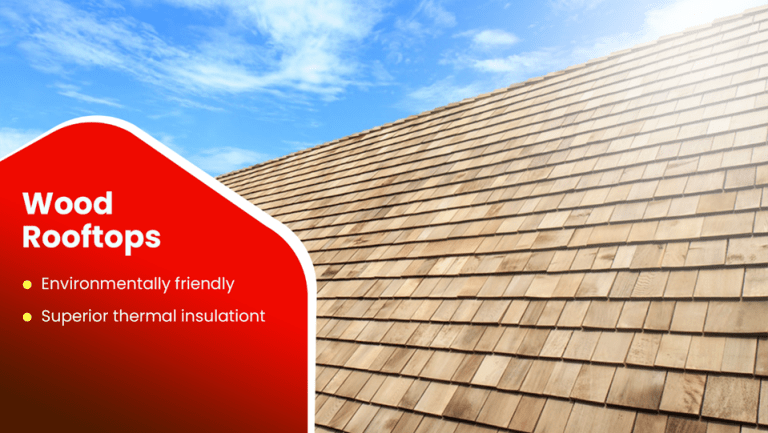
6. Rubber Membrane Rooftops:
Rubber membrane roofs, mostly made of thermoplastic olefin or ethylene propylene diene terpolymer, are a good choice for solar panel installation. They are weather-resistant and can cater to temperature fluctuations. This durability ensures that rubber membrane roofs can support panels without degradation issues. Plus, the smooth surface eases the installation process and accommodates additional loads.
Advantages:
- This roof is made with eco-friendly material, which reduces the environmental impact and increases the solar panel efficiency.
- Above all, they are chemical resistant, which makes them ideal for both residential and commercial solar panel installation.
Disadvantages:
- The rubber membrane proof has thermal movements like heat expansion and contraction. If the solar panels are not installed properly, this can impact the solar panel’s efficiency.
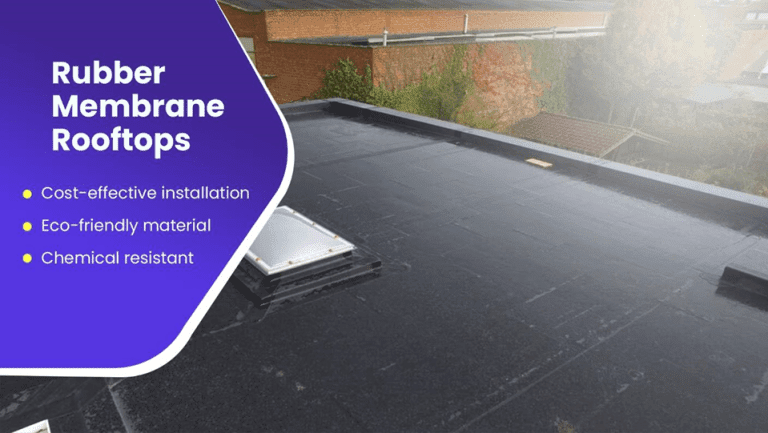
7. Slate Rooftops:
The slate roofs are known for their durability and longevity. These roofs can last up to 100 years and can support solar panels as long as they can last. Moreover, the robust material can support the solar panels’ weight without any complications. You don’t have to put extra effort into maintaining slate roofs because they are quite resistant, even during extreme weather conditions.
Advantages:
- The slate roofs provide solid support to the solar panel mounts which reduce the risk of displacements.
- It has natural cooling and heating properties, which improve solar panel efficiency and keep your home at optimal operating temperatures.
Disadvantages:
- Even though it is durable, if it gets damaged, repairing a slate roof is quite expensive because it requires high-end roofing material.
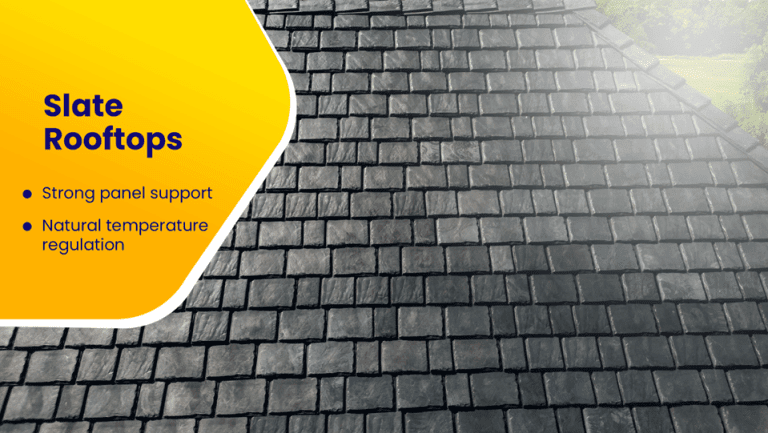
What are the best roofs for solar panels?
Choosing the best roof for solar panels depends on several factors, like angle, pitch, durability, and more. So, it’s important to hire a professional installer who can help you in making informed decisions based on these factors. For solar panel installation, both sloped and flat roofs can work. In comparison to sloped roofs, the preference for a flat roof is quite different because of the installation procedure.
On flat roofs, you can install solar panels more easily than on sloped roofs because the movement is quite restricted on sloped roofs. However, a ballast system or mount system is required to install solar panels on the flat roofs. Alternatively, you need penetrating mounts on sloped roofs, which can lead to water leakage issues.
But if we need to choose between flat and sloped roofs, the flat roofs are preferable because of ease of installation and lower maintenance.
Do you need a new roof for solar panels?
Roofs last 15 to 25 years, but solar panels can last up to 30 years. With regular maintenance, you can increase the longevity of solar panels even beyond 30 years. So, before solar panel installation, hire a professional installer to analyze the condition of the rooftop and replace it if needed. Through this, you can ensure the longevity of solar panels without any complications.
How much roof space is required for solar panel installation?
It depends on several factors, including the types of solar panels, the size of the solar system, and your daily electricity consumption. To sum up, fifteen watts of energy is generated by one square foot of roof space. The large home requires around one thousand square feet, but the small home requires around two hundred square feet. On average, around 19 to 23 solar panels, each size around eighteen square feet, are needed. The best roof material will keep your solar panels secure for their 25-warrantied life or longer. The important thing is to get a system installed so you can start saving money and generating clean energy.
To make the best decision, you need a professional installer, and SolarSME can help you in this matter. Contact us today and request your free quote to get the best rooftop solar.
Related Articles:
While solar power is an ideal solution to mitigate rising utility bills and long power outages, factors like roof direction, panel efficiency, and even weather changes, etc., may all affect the solar panel output. Explore tips to get most out of your solar system!
In the United States, if you reside in a subdivision, planned community, or a building, you may be a part of the Homeowners Association, also known as HOA.
Tesla solar shingles may seem visually appealing, but it is essential to consider the pros and cons, Tesla roof tile costs, etc., according to your energy goals. We will compare solar roofs with solar panels to help you make a smart decision for your home.

